|
Books Should Be Free Loyal Books Free Public Domain Audiobooks & eBook Downloads |
|
|
Books Should Be Free Loyal Books Free Public Domain Audiobooks & eBook Downloads |
|
Top Authors |
|---|
|
Book type:
Sort by:
|
By: Alfred Sidgwick (1854-1934) | |
|---|---|
 Home Life in Germany
Home Life in Germany
| |
By: Alfred Sutro (1863-1933) | |
|---|---|
 Five Little Plays
Five Little Plays
British dramatist Alfred Sutro's collection contains five one act plays: "The Man in the Stalls," "A Marriage Has Been Arranged…", "The Man on the Kerb," "The Open Door," and "The Bracelet." The plays are performed by Amanda Friday, Libby Gohn, Elizabeth Klett, mb, Bob Neufeld, Caprisha Page, Bruce Pirie, and Algy Pug. | |
 Mollentrave on Women
Mollentrave on Women
Mollentrave has written a “Love Doctor” book for men entitled “Mollentrave on Women” which purports to give any man the “Midas Touch” with the fairer sex. But as King Midas could’ve told us, these things have a way of backfiring… - Summary by Son of the Exiles Cast list: Mr. Mollentrave: azureblue Sir Joseph Balsted, K.C., M.P.: Mike Manolakes Everard Swenboys: Ethan Hurst Lord Contareen: Adrian Stephens Mr. Dexter: ToddHW Mr. Noyes: Alan Mapstone Peters, Sir Joseph’s Butler: Cavaet Martin, Mollentrave’s Butler: David Purdy Lady Claude Derenham: JennPratt Margaret Messilent: Nichole James Miss Treable: Joanna Michal Hoyt Mrs... | |
By: Alfred Tennyson Tennyson (1809-1892) | |
|---|---|
 Becket and other plays
Becket and other plays
| |
 Lady Clare
Lady Clare
| |
 The Last Tournament
The Last Tournament
| |
 Queen Mary and Harold
Queen Mary and Harold
| |
By: Alfred Trumble | |
|---|---|
 In Jail with Charles Dickens
In Jail with Charles Dickens
| |
By: Alfred W. Pollard (1869-1948) | |
|---|---|
 Henry VIII.
Henry VIII.
| |
 A Short History of the Great War
A Short History of the Great War
| |
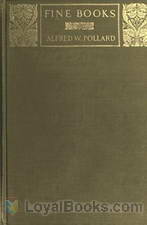 Fine Books
Fine Books
| |
 The History of England - a Study in Political Evolution
The History of England - a Study in Political Evolution
| |
By: Alfred Wellesley Rees (1872-1917) | |
|---|---|
 Creatures of the Night A Book of Wild Life in Western Britain
Creatures of the Night A Book of Wild Life in Western Britain
| |
By: Alfred Wesley Wishart (1865-1933) | |
|---|---|
 A Short History of Monks and Monasteries
A Short History of Monks and Monasteries
| |
By: Alfred William Benn | |
|---|---|
 History of Modern Philosophy
History of Modern Philosophy
| |
 History of Modern Philosophy
History of Modern Philosophy
This book is a brief, but cogent discussion of Western philosophy-- from Francis Bacon and Giordano Bruno through Descartes, Spinoza, and Leibniz, Hume, Berkeley and Kant, the German idealists and Hegel, and ending with such nineteenth century luminaries as Mill, Spencer, and Nietzsche. Enchanted with Copernicus, Bruno goes to the stake for positing an infinity of inhabited worlds. Descartes, a professed skeptic, manages to justify everything the Jesuits taught him at La Flèche, while Spinoza, in mystical awe, envisions a pantheistic cosmos in which thought and extension are one and the same thing--God... | |
By: Alfred, Lord Tennyson (1809-1892) | |
|---|---|
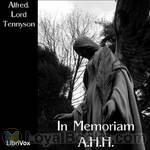 In Memoriam A.H.H.
In Memoriam A.H.H.
In Memoriam is Tennyson’s elegiac tribute to his friend Arthur Henry Hallam, who died in 1833 at the age of 22. Tennyson wrote this long poem over 17 years as a chronicle of his mourning process. The poem became a favorite of Queen Victoria when she was grieving for her husband, and was one of the most popular and artistically influential poems of the Victorian period. | |
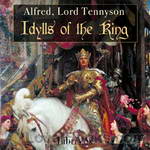 Idylls of the King
Idylls of the King
Idylls of the King, published between 1856 and 1885, is a cycle of twelve narrative poems by the English poet Alfred, Lord Tennyson which retells the legend of King Arthur, his knights, his love for Guinevere and her tragic betrayal of him, and the rise and fall of Arthur's kingdom. The whole work recounts Arthur's attempt and failure to lift up mankind and create a perfect kingdom, from his coming to power to his death at the hands of the traitor Mordred. Individual poems detail the deeds of various knights, including Lancelot, Geraint, Galahad, and Balin and Balan, and also Merlin and the Lady of the Lake. | |
 The Princess
The Princess
The Princess is a serio-comic blank verse narrative poem, written by Alfred Tennyson, published in 1847. The poem tells the story of an heroic princess who forswears the world of men and founds a women's university where men are forbidden to enter. The prince to whom she was betrothed in infancy enters the university with two friends, disguised as women students. They are discovered and flee, but eventually they fight a battle for the princess's hand. | |
 Charge of the Light Brigade
Charge of the Light Brigade
This poem was published just six weeks after the event, its lines emphasize the valour of the cavalry in bravely carrying out their orders, regardless of the obvious outcome. The Charge of the Light Brigade was a charge of British light cavalry led by Lord Cardigan against Russian forces during the Battle of Balaclava on 25 October 1854 in the Crimean War. Lord Raglan, overall commander of the British forces, had intended to send the Light Brigade to pursue and harry a retreating Russian artillery battery, a task well-suited to light cavalry... | |
 Maud, and Other Poems
Maud, and Other Poems
A collection of poems by Alfred, Lord Tennyson, his first book of poetry after having become poet laureate in 1850. Among the "other poems" is The Charge of the Light Brigade, the most well-known poem in this collection. However, the bulk of the text is the poem Maud, which explores love, courtship, loss, grief, and purpose through the eyes of the emotionally unstable poet narrator. | |
 Brook - Break, Break, Break - Sweet and Low - and The Eagle
Brook - Break, Break, Break - Sweet and Low - and The Eagle
This is Tennyson at his best. This is Tennyson, the master poet at his most descriptive, his most insightful, his most enlightening. This set of four poems has been carefully selected to depict life and life journeys - journeys that encompass timelessness and tragedy, fragility and hope - in ways that illuminate the constant cloud of wonder surrounding the ephemeral quality of existence. These are four magnificent poems that speak of life, its tragedies, its loneliness, its dangers and its brevity in a superb juxtaposition with the enduring and unchanging character of the natural world... | |
 Eagle
Eagle
volunteers bring you 21 recordings of The eagle by Alfred, Lord Tennyson. This was the Weekly Poetry project for September 18, 2022. ------ "A single line, nay, a single word, and a scene is by magic before us, as here where the sea is looked down upon from an immense height:— The wrinkled sea beneath him crawls. | |
 Sea-Fairies and Other Poems
Sea-Fairies and Other Poems
This amazing collection of some of Tennyson's best and most capricious poems takes us on a whimsical voyage, an allegorical voyage like no other - and we will be in good hands for at the tiller is Lord Tennyson himself. We will be guided by this master poet through a fantastic imaginary world of things that may exist, things that are, and those that may lie ahead. Our explorations will be wide-ranging as we consider with the poet, other life forms and existences and go on to explore diverse reactions to the events and pathos of lives extended to their fullest and the passion involved when the weight of lives lived as victims are realized to be wanting, melancholy and dismal... | |
 Enoch Arden
Enoch Arden
In the poem "Enoch Arden," Tennyson's epic narrative of the enduring power of love in the face of insurmountable odds, is found a classic example of the determination of the human spirit to triumph in circumstances that address the true meaning of the power of love itself. Wanting only the very best for his impoverished wife and family, seaman Enoch Arden undertakes precarious work which leaves him marooned and presumed lost at sea. On his return home Enoch finds his family well and prospering but his wife remarried... | |
 Maud, and Other Poems (Version 2)
Maud, and Other Poems (Version 2)
Surely everyone knows “Maud”? Isn’t that the Victorian love song, where the man waits by the garden gate for his lover to appear for a secret rendezvous? Well, that may be the song, but Tennyson’s poem is longer and very much darker. It deals not with love but with the obsession of an unstable young man with the seventeen-year-old Maud, and his gradual descent into madness. The poem’s narrator has been excluded from an evening ball being held at Maud’s home, The Hall, and has climbed into her garden uninvited, convincing himself by a misreading the Language of Flowers that she has sent him a love-token in the form of a rose blossom... | |
By: Alfredo d'Escragnolle Taunay (1843-1899) | |
|---|---|
 Innocencia: a story of the prairie regions of Brazil
Innocencia: a story of the prairie regions of Brazil
The story of Innocencia, an 18-year-old girl who lives in the prairies of Brazil, is a twist on the traditional love triangle. The plot has been compared to the more famous "Paul and Virginie" and "Romeo and Juliet", but it takes place on the dropback of the loneliness of the sparsely populated backregions in 19th century Brazil, visited by a German naturalist in search of new species of insects, Dr. Meyer, who unsuspectedly finds himself caught in a complicated maze of jealousy, love and distrust. Inocencia was the first book by a Brazilian writer to be translated into English, as the translator states in his preface. - Summary by Leni | |
By: Algernon Bastard | |
|---|---|
 The Gourmet's Guide to Europe
The Gourmet's Guide to Europe
| |
By: Algernon Blackwood (1869-1951) | |
|---|---|
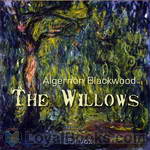 The Willows
The Willows
A tale of horror in which a pleasant sojourn down the Danube tumbles terrifyingly awry as the veil between this world and an unfathomably weird dimension is inadvertently pierced by an innocent pair of vacationers, “The Willows”, arguably Algernon Blackwood’s seminal contribution to supernatural literature, has had a lasting influence on the field. No less a personage than H. P. Lovecraft describing it as “…the greatest weird tale ever written.” A reading will reveal a clear influence to one familiar with Lovecraft’s work... | |
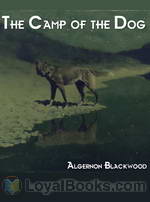 The Camp of the Dog
The Camp of the Dog
A party of campers on a deserted Baltic island is terrorized by a huge wolf… or is it? | |
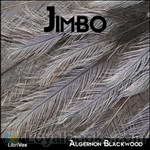 Jimbo
Jimbo
A supernatural fantasy about the mystical adventures of a lonely English boy named Jimbo–who can fly! It’s really quite beautiful and can be enjoyed by adults and teenagers alike. Be warned, however: The death of a beloved character and a creepy old house haunted by the wraith-like spirits of children makes some of this story far too scary for younger kids or indeed anyone of a sensitive disposition. Algernon Blackwood (1869-1951) was born in south London and wrote many tales of the supernatural. | |
 The Wendigo
The Wendigo
Another camper tale, this time set in the Canadian wilderness. A hunting party separates to track moose, and one member is abducted by the Wendigo of legend. Robert Aickman regarded this as "one of the (possibly) six great masterpieces in the field". | |
 The Man Whom the Trees Loved
The Man Whom the Trees Loved
The story of a man’s deep connection with nature and his wife’s fear of it. | |
 The Centaur
The Centaur
| |
 Four Weird Tales
Four Weird Tales
Four stories: The Insanity of Jones, The Man Who Found Out, The Glamour of the Snow, and Sand. Tales by one the greatest practitioners of supernatural literature. Reincarnation, the Occult, and mystery. | |
 The Damned
The Damned
| |
 John Silence
John Silence
Six stories about Dr. John Silence if you want the shivers to run up your back, this is the right place to be | |
 The Garden of Survival
The Garden of Survival
| |
 A Prisoner in Fairyland
A Prisoner in Fairyland
| |
 The Wave An Egyptian Aftermath
The Wave An Egyptian Aftermath
| |
 The Promise of Air
The Promise of Air
| |
 The Extra Day
The Extra Day
| |
 Bright Messenger
Bright Messenger
Julian LeVallon, born and raised alone in the Jura Mountains, is referred to psychiatrist Dr. Edward Fillery for care in London. But is LeVallon merely a schizophrenic with a secondary personality, "N.H." (non-human), or is he really an Elemental Being, a "bright messenger" who brings, perhaps, a new age of human evolution? And if so, is the human race ready for a major step forward? | |
 Man Who Found Out (A Nightmare)
Man Who Found Out (A Nightmare)
A researcher goes on an expedition to find "The Tablets of the Gods" which have plagued his dreams since his boyhood. He finds them, and the horrible truth of humanity's true purpose in the universe. This story, The Man Who Found Out" is an example to me of pure cosmic horror in that the horror comes totally from knowledge which is (in-story) so terrible that it forever blights the minds of anyone who discovers it. Two highly intelligent and well informed men, Professor Ebor and then Dr. Laidlaw,... | |
 Willows (version 2)
Willows (version 2)
"The Willows" is one of Algernon Blackwood's best known creepy stories. American horror author H.P. Lovecraft considered it to be the finest supernatural tale in English literature. He wrote in his treatise "Supernatural Horror in Literature", "Here art and restraint in narrative reach their very highest development, and an impression of lasting poignancy is produced without a single strained passage or a single false note." "The Willows" is an example of early modern horror and is connected within the literary tradition of weird fiction. | |
 Day And Night Stories
Day And Night Stories
Fifteen short stories by Algernon Henry Blackwood, CBE (1869 – 1951), an English short story writer and novelist, one of the most prolific writers of ghost stories in the history of the genre. He was also a journalist and a broadcasting narrator. S. T. Joshi has stated that "his work is more consistently meritorious than any weird writer's except Dunsany's…" | |
 Lost Valley
Lost Valley
A set of twin brothers have spent every waking moment of their lives together and are terrified of separating. However, when both men set their desires upon a mysterious young woman, the deep bonds of their relationship become marred. | |
 Three More John Silence Stories
Three More John Silence Stories
A trio of supernatural stories by famed author Algernon Blackwood. - Summary by eduardol | |
 Regeneration of Lord Ernie
Regeneration of Lord Ernie
"The Regeneration of Lord Ernie is a story about a young man with no passion for life, he was very capable and the heir to a large family fortune but just not interested in life. His father employs a teacher, John Hendricks, to take him on a world tour and try to inspire him. In the final stage of the tour in desperation he takes him to the Jura mountains, where he went as a young man, to visit a pastor he stayed with. During the stay they get involved with pagan worship that involves the transforming power of wind and fire, up in the mountains... | |
 Ten Minute Stories
Ten Minute Stories
Noted author of weird fiction Algernon Blackwood brings us a collection of shorter stories than some of his more well-known tales of terror. These stories illustrate the true breath of Blackwood's talent beyond just that of a purveyor of the supernatural. In addition to strange occurrences, mysterious phenomena, bizarre dreams and tales of the just plain weird contained herein, we also see a more jovial and comedic side of Blackwood as he pokes good-natured fun at the foibles of social manner in upper class society... | |
 Episodes Before Thirty
Episodes Before Thirty
Blackwood wrote this autobiography in his fifties, describing his first thirty years as an almost penniless British adventurer in Canada and New York, trying his hand at all sorts of investments, getting swindled again and again, sleeping on park benches, living in the woods, and sharing a one room tenement with friends who betrayed him and others who helped him through sickness and injury, reporting on aberrant personalities he met, their strange circumstances, and witnessing the criminal workings of Tammany Hall during his stint as a reporter for the Sun... | |
 Listener and Other Stories
Listener and Other Stories
Algernon Blackwood, noted maestro of weird fiction, in his second collection of stories gives us some of his best and most well-known tales of the strange and macabre. From the unsettling haunted house story "The Listener" to the chilling true crime story "Max Hensig: Bacteriologist and Murderer", from the otherworldly tale of reincarnation "The Insanity of Jones" to one of the single most influential and eerie stories in all weird literature "The Willows", this collection shows Blackwood's masterful grasp of tension and atmosphere, further cementing his place among the greats of horror fiction. - Summary by Ben Tucker | |
By: Algernon Charles Swinburne (1837-1909) | |
|---|---|
 A Study of Shakespeare
A Study of Shakespeare
| |
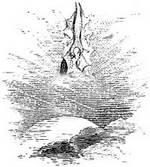 William Blake A Critical Essay
William Blake A Critical Essay
| |
 The Age of Shakespeare
The Age of Shakespeare
| |
 Atalanta in Calydon
Atalanta in Calydon
| |
 The Tale of Balen
The Tale of Balen
| |
 Astrophel and Other Poems Taken from The Collected Poetical Works of Algernon Charles Swinburne, Vol. VI
Astrophel and Other Poems Taken from The Collected Poetical Works of Algernon Charles Swinburne, Vol. VI
| |
 Rosamund, queen of the Lombards, a tragedy
Rosamund, queen of the Lombards, a tragedy
| |
 Century of Roundels
Century of Roundels
A roundel (not to be confused with the rondel) is a form of verse used in English language poetry devised by Algernon Charles Swinburne (1837–1909). It is a variation of the French rondeau form. It makes use of refrains, repeated according to a certain stylized pattern. A roundel consists of nine lines each having the same number of syllables, plus a refrain after the third line and after the last line. The refrain must be identical with the beginning of the first line: it may be a half-line, and rhymes with the second line... | |